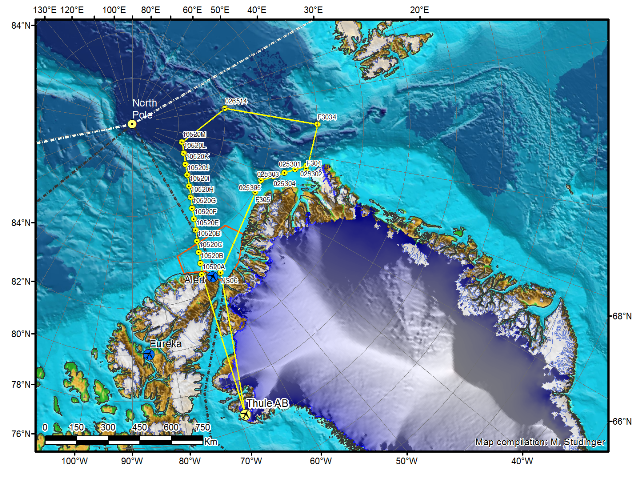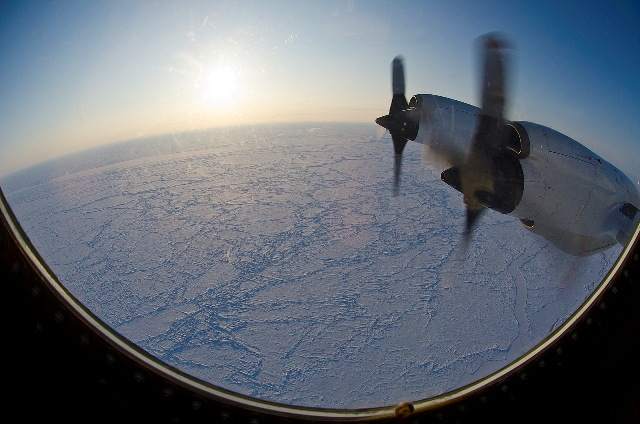From Malcolm (ESA) and Michael (NASA), the Arctic, 2 April
Monday 2 April has been much anticipated by the teams in Thule, Greenland (NASA) and Alert, Canada (ESA). While the objectives for the day were clear – jointly fly with all available planes beneath CryoSat’s early morning pass over the Arctic Ocean – the execution of such flights is and always will be a challenge.
Flying joint multi-plane missions is a rather daunting task. Departure and rendezvous times and locations need to be calculated and maintained to ensure that the instruments on the different planes will see the same sea-ice floes below (these move after all !), flight altitudes need to be established and maintained for safety reasons, instruments need to be warmed up and ready ‘in-time’, somewhat grumpy fire-fighters need to be coaxed out to the airstrip ahead of working hours to support an early departure… and the list goes on.
With both teams committed to the flights, the first task early this morning was to check the weather forecast for the day. These proved to be good with temperatures of –29°C and generally clear skies; but not ideal! Some rather worrying cloud formations featured near the coast in satellite images.
Nevertheless, after a quick phone call between the NASA and ESA coordinators (at a time before most people have yet to reach for their mug of morning coffee) the decision was made: it’s a go.
From then on it there was a flurry of activity on both sides, pilots warmed up their planes, instrument teams checked out their instruments, flight plans were programmed into the onboard computers and so on.
The NASA P-3 plane was the first to go out, leaving Thule a full hour before the two ESA planes located closer to the track. On the tarmac in Alert there was the first casualty of the day – despite heroic efforts the EM-bird ice-thickness instrument could not be coaxed into life. The die was cast – the second Twin-Otter plane would have to go it alone and meet up with the NASA P-3.

NASA’s sea-ice mission plan for 2 April (yellow). We teamed up with ESA at 10520 north of Alert. (NASA/M. Studinger)
Around 07:30 (local time) the CryoSat satellite – always on schedule – ripped above the Arctic Ocean taking about 1 minute to race along the 500-km transect that would later take several hours of plane time to cover.
At 08:00 both the ESA and NASA planes reached the edge of the Arctic Ocean almost simultaneously and headed out across the sea ice flying along the exact same line that CryoSat had traced out below an hour before. The timing was so good that, for the first time, there was visual contact between the planes, a remarkable achievement!
The image below, which is a DMS mosaic from Eric Fraim shows one of the many leads we saw from the NASA P-3 today with a variety of different types of sea ice.
The rest of the day turned out very well indeed. The clouds that had worried the teams in the morning only formed only a thin band near the coast. The rest of the line out on the ocean was clear and beautifully lit by the oblique Arctic Sun. All the onboard scientific instruments on both planes worked well so that by the end of the day it was clear that the day had been a success.
By joining forces both the ESA and NASA teams collected a highly valuable dataset that will benefit the scientific achievements of ESA’s CryoSat and NASA’s future IceSat-2 mission to better monitor sea ice from space.












Discussion: no comments